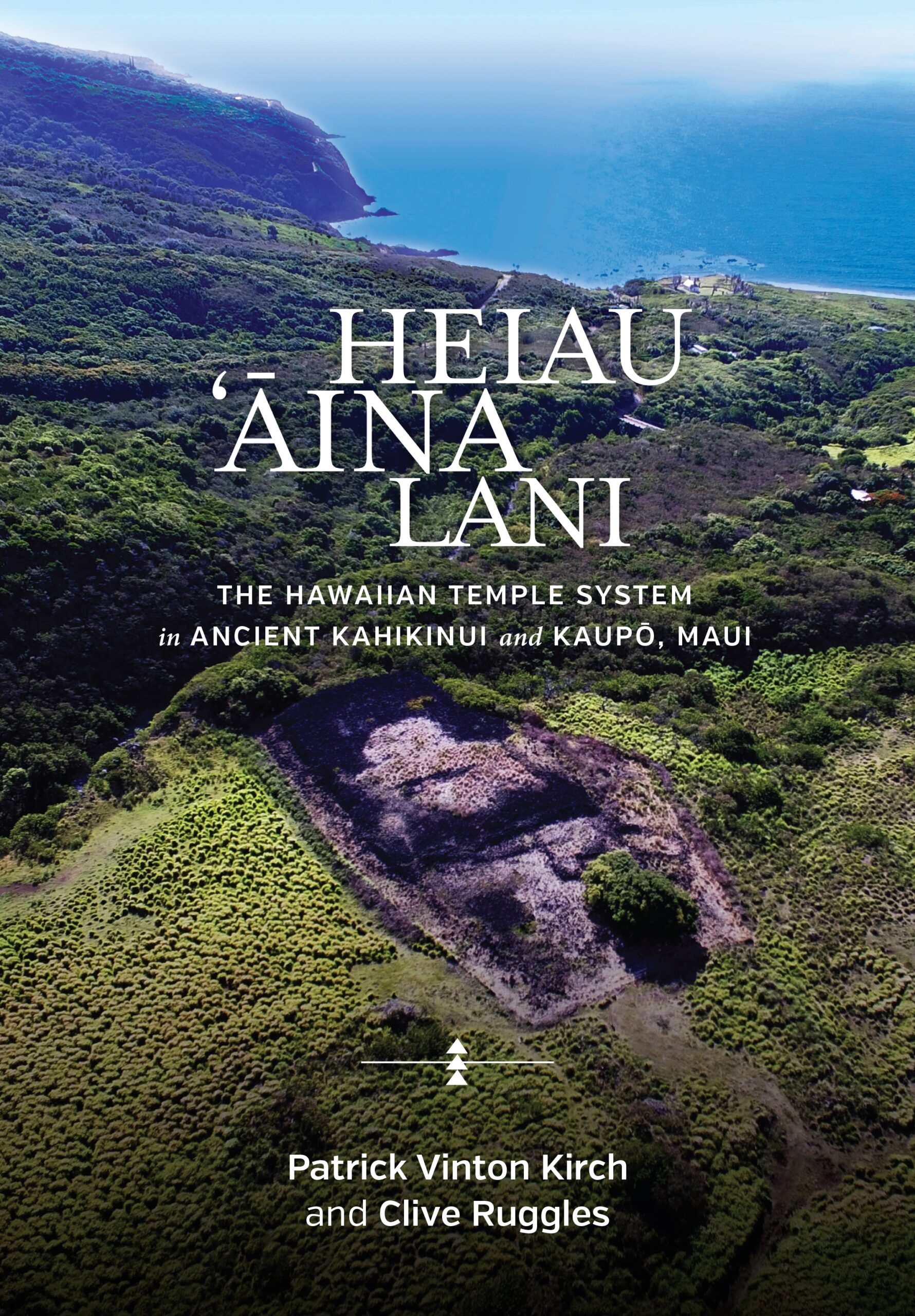Heiau, ‘Āina, Lani: The Hawaiian Temple System in Ancient Kahikinui and Kaupō, Maui
- About the Book
-
Heiau, ‘Āina, Lani is a collaborative study of 78 temple sites in the ancient moku of Kahikinui and Kaupō in southeastern Maui, undertaken using a novel approach that combines archaeology and archaeoastronomy. Although temple sites (heiau) were the primary focus of Hawaiian archaeologists in the earlier part of the twentieth century, they were later neglected as attention turned to the excavation of artifact-rich habitation sites and theoretical and methodological approaches focused more upon entire cultural landscapes. This book restores heiau to center stage. Its title, meaning “Temples, Land, and Sky,” reflects the integrated approach taken by Patrick Vinton Kirch and Clive Ruggles, based upon detailed mapping of the structures, precise determination of their orientations, and accurate dating.
Heiau, ‘Āina, Lani is the outcome of a joint fieldwork project by the two authors, spanning more than fifteen years, in a remarkably well-preserved archaeological landscape containing precontact house sites, walls, and terraces for dryland cultivation, and including scores of heiau ranging from simple upright stones dedicated to Kāne, to massive platforms where the priests performed rites of human sacrifice to the war god Kū. Many of these heiau are newly discovered and reported for the first time in the book.
The authors offer a fresh narrative based upon some provocative interpretations of the complex relationships between the Hawaiian temple system, the landscape, and the heavens (the “skyscape”). They demonstrate that renewed attention to heiau in the context of contemporary methodological and theoretical perspectives offers important new insights into ancient Hawaiian cosmology, ritual practices, ethnogeography, political organization, and the habitus of everyday life. Clearly, Heiau, ‘Āina, Lani repositions the study of heiau at the forefront of Hawaiian archaeology.
- About the Author(s)
-
Patrick Vinton Kirch, Author
Patrick Vinton Kirch is professor of anthropology at the University of Hawai‘i at Mānoa, and professor emeritus at the University of California, Berkeley.Clive Ruggles, Author
Clive Ruggles is emeritus professor of archaeoastronomy in the School of Archaeology and Ancient History at the University of Leicester, United Kingdom.
- Reviews and Endorsements
-
- Using an archaeological ethnographic approach, Heiau, ‘Āina, Lani combines detailed, systematic archaeological data with culturally contextualized interpretation and archaeo-astronomical facts to not only offer new insights into the native Hawaiian society, but also a research method that can be replicated in other regions of Hawaii and Polynesia. It will certainly open new directions for Polynesian scholarship.
—CHOICE, December 2019 (Vol. 57 No. 4) - I admire this well-written book and the authors’ outstandingly detailed research. The book is a valuable resource both as an instructive text on archaeoastronomical research and as a compendium of sites in the Kahikinui and Kaupō regions of Maui. It will be an excellent text for undergraduate and graduate students, a useful reference for scholars and, despite the use of technical archaeological and astronomical terms, an enlightening work for the layperson.
—Martha H. Noyes, Journal of Skyscape Archaeology, 5:2 (2020) - In this book the authors take a large step towards a useful approach of archaeoastronomy in Hawai‘i and beyond. . . . [Part II] is a rare ‘goldmine’ of information, which will make many archaeologists dealing with Polynesian temple structures happy, and the data will also be very useful for future archaeological analysis. I strongly suggest any person interested in archaeology and monumental structures to read this book: it is a good combination of deep knowledge in the fields of Polynesian archaeology and ethnohistory as well as astronomy.
—Paul Wallin, Uppsala University, Journal of Pacific Archaeology, 11:1 (2020)
- Using an archaeological ethnographic approach, Heiau, ‘Āina, Lani combines detailed, systematic archaeological data with culturally contextualized interpretation and archaeo-astronomical facts to not only offer new insights into the native Hawaiian society, but also a research method that can be replicated in other regions of Hawaii and Polynesia. It will certainly open new directions for Polynesian scholarship.
- Supporting Resources
-





